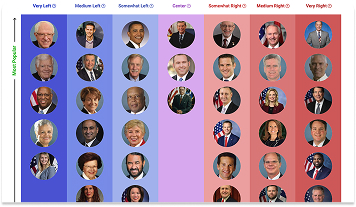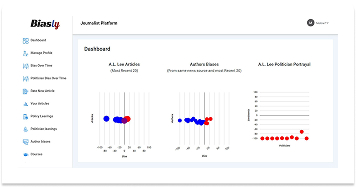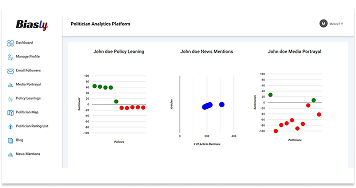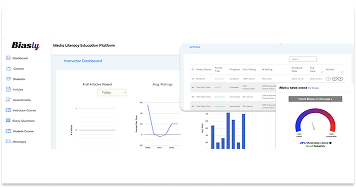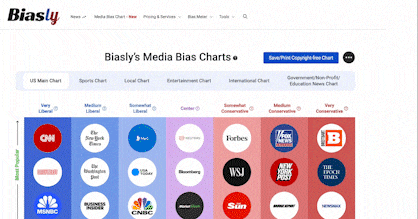Bias Meter
Extremely
Liberal
Very
Liberal
Somewhat Liberal
Center
Somewhat Conservative
Very
Conservative
Extremely
Conservative
-100%
Liberal
100%
Conservative
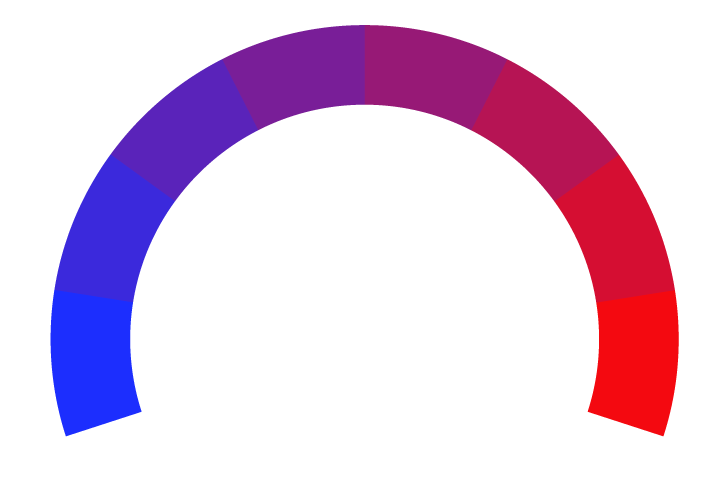
Biasly determines media bias ratings through a dual-layered approach combining artificial intelligence and analyst review. The platform’s proprietary bias detection engine, Bias Meter, evaluates sentiment, policy position alignment, and language framing across thousands of data points in news articles. Analysts then verify and interpret the AI’s findings, providing additional context where needed. Learn more
- Profile
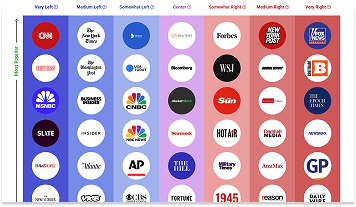
The Atlantic on the media bias chart
The Atlantic has a Bias Score of -34% Somewhat Left which is based on a variety of factors including its policy and politician leanings, article ratings, and the use of biased language. Its Reliability is rated as Average, and additional analytical insights are available in the other tabs.
- Bias Rating
-34% Somewhat Left
- ReliabilityPolicy Leanings
14% Somewhat Right
Extremely
LiberalVery
LiberalModerately
LiberalSomewhat Liberal
Center
Somewhat Conservative
Moderately
ConservativeVery
ConservativeExtremely
Conservative-100%
Liberal100%
Conservative
Average Reliability
*Our bias meter rating uses data science including sentiment analysis, machine learning and our proprietary algorithm for determining biases in news articles. Bias scores are on a scale of -100% to 100% with higher negative scores being more liberal and higher positive scores being more conservative and 0% being neutral. The rating is an independent analysis and is not affiliated nor sponsored by the news source or any other organization.
Politician Portrayal83% negative
Continue For Free
Create your free account to see the in-depth bias analytics and more.
By creating an account, you agree to our Terms and Privacy Policy, and subscribe to email updates.
Policy Leanings Analysis
Policy | Bias score |
|---|
The Atlantic Editorial Patterns
The Atlantic’s coverage of political topics often reflects a Somewhat Left bias, with consistent patterns present in their articles that are Lean Left. While The Atlantic is still considered to be a reputable news source, this does not exempt them from ideological biases. In this section, we aim to point out different ways in which these biases may be seen in The Atlantic’s articles.
Coverage of Liberal vs. Conservative Topics
The Atlantic covers many liberal issues like the war in Gaza, abortion, and climate change. Articles that cover these issues tend to support and convey liberal perspectives on these issues. For example, articles regarding climate change tend to favor the perspective of scientists who argue for the need for human intervention in reducing climate change. By presenting arguments for the reduction of fossil fuels, they frame the issue with a liberal slant.
The Atlantic is generally more critical in its portrayal of conservative policies and politicians. This can be seen mostly through their portrayal of Trump’s policies, which are rarely ever seen in a positive light. Additionally, The Atlantic tends to use more negative diction when describing conservative politicians and policies compared to their use of diction with liberal politicians and policies.
Policy and Issue Framing
In its coverage on the war in Gaza, The Atlantic supports the liberal position of a two-state solution and portrays liberal politicians as supporters of this cause. On the other hand, conservative politicians like Trump are often portrayed as hindrances to peace and unconstructive in negotiating a sustainable solution.
In contrast, conservative issues like border security are examined in a much more critical and antagonistic tone. Articles often portray conservative policies on these issues as misdirected or fruitless.
Even reputable sources like The Atlantic may use phrasing that subtly frames issues in a partisan way. Being able to recognize these different forms of framing is helpful in analyzing the ideological bias of articles.
Coverage and Relevance
The Atlantic is a major contributor to many different key issues within American and international politics. Because of this, they serve as an interesting example of how major news sources convey their own ideological biases.
Readers who wish to further explore how The Atlantic compares with other publications can visit Biasly’s Media Bias Chart to analyze tone and word choice in real time.
The Atlantic Bias Analysis
The Atlantic is a renowned American magazine that has been in circulation since 1857. As of 2025, The Atlantic has three Pulitzer Prizes. In 2024, The Atlantic reported that they had reached over 1 million subscribers. However, Similarweb, a website that tracks website engagement, recorded that The Atlantic had 26.5 million visits in July 2025. This means that The Atlantic has an extremely broad reach within the news world.
As a leading American news outlet, The Atlantic plays a major role in shaping public sentiment. This section explores its editorial tendencies and how political bias is reflected in its coverage.
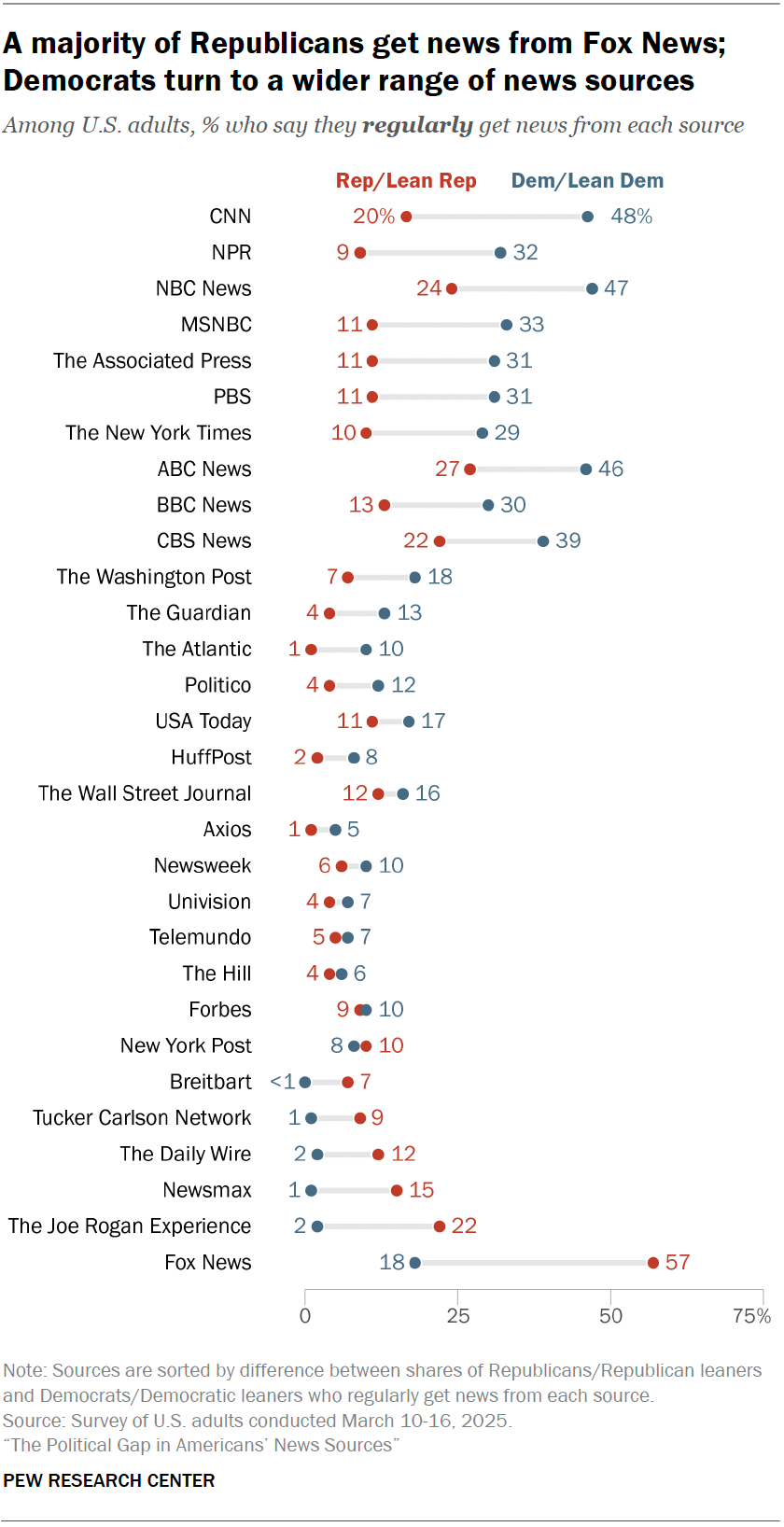
Source: Pew Research Center
According to Pew, The Atlantic’s audience is mostly liberal-leaning Americans. This makes it likely that The Atlantic considers their audience in terms of how they want to frame their articles.
Is The Atlantic Biased?
Based on Biasly’s evaluations, The Atlantic is rated as Somewhat Left.
By examining content patterns and the broader context of media influence, we aim to offer a balanced perspective on The Atlantic’s political bias—and contribute to the ongoing discussion about bias in the news.
How Does Biasly Rate News Sources?
Biasly uses proprietary algorithms and a team of analysts to provide comprehensive bias evaluations across thousands of news outlets. Over 200,000 articles from more than 3,200 sources have been analyzed to identify the most accurate and unbiased stories.
Biasly assigns each outlet three key scores:
- Reliability Score – Reflects factual accuracy
- AI Bias Score – Generated via natural language processing
- Analyst Bias Score – Assessed by human political analysts
These scores are based on seven core metrics: Tone, Tendency, Diction, Author Check, Selection/Omission, Expediency Bias, and Accuracy. These elements help analysts and algorithms evaluate the political attitude conveyed by each article.
Biasly’s Bias Meter ranges from -100% (most left) to +100% (most right), with 0% indicating neutrality. The system evaluates individual articles based on political terms, policies, figures, and sentiment to calculate precise bias ratings.
Is The Atlantic Politically Biased?
The Atlantic earns a Somewhat Left rating for its AI Bias Score and a Somewhat Left for its Analyst Bias Score. The Analyst Bias Score is generated by reviewers from liberal, moderate, and conservative backgrounds. Analysts reviewed multiple articles and noted a preference in portraying liberal politicians positively, while conservative politicians critically.
Because The Atlantic’s audience tends to be liberally leaning, this may explain why The Atlantic frames and portrays these issues with a liberal slant. The tendency to frame their articles in this manner also explains why Pew’s research showed that conservatives tend not to read The Atlantic.
This Bias score is determined through natural language processing that evaluates the tone, word choice, and opinion embedded in the reporting. Recent AI evaluations show a tendency to be critical of the republican party and its stances.
Analysis of Bias in The Atlantic’s Online Articles
To evaluate the bias present in The Atlantic’s articles, Biasly analysts utilized these criteria:
- Tone: The overall attitude conveyed by the article’s rhetoric
- Diction: Specific word choices made by the author
- Author: The background and social presence of the journalist
- Tendency: Patterns of bias in the writer’s other works
- Expediency Bias: Quick visual or textual indicators like headlines and photos that imply bias
An example of bias evident in tone appears in The Atlantic’s article “Trump Tries to Blame the Colorado Attack on ‘Open Border’ Policies”. The article, at the first glance, does not seem explicitly politically charged or biased. However, the general tone of the article conveys a sense that this article is biased towards a liberal perspective. The article utilizes the Colorado attack to criticize Trump’s response to the event, as well as Trump’s broader immigration goals. The article does not just report on the event itself, but instead situates it within a broader critique of Trump. This portrays a liberal bias as the article presents a one-sided narrative regarding the issue of immigration. It merely tries to demean the conservative perspective on this issue.
An example of diction that portrays bias is in The Atlantic’s article “Trump Keeps Defending Russia”. Here are some quotes from this article that show how diction can be analyzed to convey bias:
“Donald Trump loves to speak extemporaneously, and usually, he makes very little sense.”
“Trying to turn his ramblings into a coherent message is like trying, as an old European saying goes, to turn fish soup back into an aquarium.”
“The setting, as it so often is when Trump piles into a car with his thoughts and then goes full Thelma & Louise off a rhetorical cliff, was Fox & Friends.”
“A Trump interview on conservative media is something like a liturgy, with its predictable chants, its call-and-response moments, and its paternosters.”
The article’s usage of similes and other vivid descriptions conveys an explicit usage of language to demean Trump. These lines add little information and instead reflect liberal bias.
A good example of how an author’s background and analysis of their previous works can signal bias can be seen with Tom Nichols, a writer for The Atlantic. Here is a tweet that can give us an insight into Nichols’ own political bias:
I will never cease being shocked that millions of Americans think it’s normal for the commander in chief to talk like a nine-year-old with a behavioral disorder pic.twitter.com/2Ck7RZwKPv
— Tom Nichols (@RadioFreeTom) August 25, 2025
Nichols explicitly attacks Trump’s character and mode of speaking. This signals Nichols’ antagonism towards Trump, and therefore, it is likely that Nichols is personally more liberally biased.
When taking a look at some of Nichols’ previous article titles, this liberal bias can also be noticed: “Trump Is Using the National Guard as Bait”, “A Witch Hunt at the State Department”, and “Trump’s Plan to Sell Out Ukraine to Russia” all convey a liberal bias towards Nichols’ articles. Nichols seems to be solely focused on critiquing Trump rather than providing an objective perspective for readers to view multiple political perspectives.
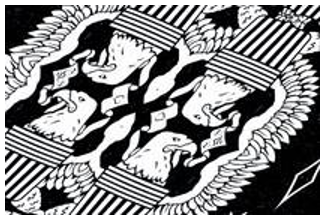
Source: The Atlantic
A great example of expediency bias can be seen in the just-mentioned article “A Witch Hunt at the State Department”. The image above is the cover photo for this article. Just based off the image, the article does not seem to be conveying any specific messages to the reader. However, the usage of the term “witch hunt” in the headline is provocative and implies the author’s ideological bias before actually reading the article. This type of bias prevents the reader from coming to their own conclusions regarding the issue, as the author signals their intent to present their own subjective account of the issue.
Another good example of expediency bias can be seen in the article “The Government Wants to See Your Papers”. Here are the first lines of the article:
“You there. Stop what you’re doing. Take off that tool belt and hard hat—let’s see some ID. Why? Because we don’t think you’re a citizen. Now show us your papers. This kind of behavior by government officials is now legal in the United States.”’
These first lines are shocking and vivid, drawing the reader in with this contrasted image of what America is really like to the author, compared to how we view America (as the land of the free, democratic, etc.). Before any information is given to us, the author frames the United States as oppressive and authoritarian. This indicates a liberal slant to the article, as these terms are often used by liberal perspectives in response to Trump’s policies.
Analysis of The Atlantic Opinion Articles
Most news outlets distinguish their factual news reports and opinion pieces. Interestingly, The Atlantic does not provide a clear distinction between these two types of reporting. Instead, it uses broad news categories that only distinguish only by topic, not by news vs. opinion. What this means is that readers should be cautious when reading The Atlantic’s articles. While their articles have an average reliability, this lack of a distinction between news and opinion pieces means it is much easier to confuse factual and opinion reporting. Regardless of whether an article is an opinion piece or not, Biasly’s five criteria are still a good source to refer to when analyzing bias.
Who Owns The Atlantic?

Laurene Powell Jobs, Source: Wikipedia
The Atlantic is owned by Emerson Collective, an organization founded and chaired by philanthropist and businesswoman Laurene Powell Jobs. Laurene Powell Jobs, the wife of the late Apple CEO, Steve Jobs, has openly been a long supporter of liberal causes. She aided the super PAC “Ready for Hillary” to raise $1.7 million in the first quarter of 2014 and has donated to many other Democratic candidates. While Jobs’ political affiliation does not necessarily make The Atlantic convey a liberal bias, it is definitely important to keep in mind.
How to Evaluate Bias
Although Biasly rates The Atlantic as Somewhat Left, it’s important to remember that bias can vary from article to article. Here is how you can evaluate media bias on your own.
Recognizing media bias requires awareness and critical thinking. Often, readers trust news sources that affirm their existing beliefs, a psychological tendency known as confirmation bias. This makes it harder to identify slanted narratives or one-sided reporting.
To combat this, it’s essential to challenge your assumptions by consulting multiple viewpoints and verifying news through third-party analysis. Tools like Biasly’s media bias ratings allow readers to compare the same news story across the political spectrum.
Ultimately, bias isn’t always a matter of what is said, it’s also about what is left out, how topics are framed, and which stories are chosen for coverage. Learning to recognize these patterns can help readers make more informed decisions and develop greater media literacy.
To start comparing news outlets and gain a better understanding of bias, sign up for Biasly’s Media Bias & News Analytics Platform to see how stories vary between sources.
The Atlantic Reliability Analysis
The Atlantic is average in its reliability. Oftentimes, readers are blinded by their own confirmation bias and look for articles that affirm their views, rather than present a neutral portrayal of an event. With this in mind, let’s take a look at how ideological bias in The Atlantic’s articles affects their accuracy.
How to Evaluate Reliability?
Reliability refers to how trustworthy or accurate a news source is. If readers cannot trust what they consume, then the outlet’s value as a news source diminishes significantly. So how do we evaluate a news outlet’s reliability?
There are several potential measures of reliability to look out for when trying to determine whether a media source is reliable or not. Red flags for an unreliable article can include the presence of wild, unsubstantiated claims, facts dependent on other unreliable sources, heavy use of opinionated language, and more. In contrast, hallmarks of a reliable source include:
- Absence of subjective language
- Citing credible sources (e.g., .gov, .edu, academic references)
- Verifiable facts and statistics from multiple outlets
- Use of primary sources, like interviews or transcripts
- Consistency with coverage across other platforms
Biasly’s reliability scores incorporate these elements in evaluating media outlets.
So How Does The Atlantic Fare in Its Reliability?
The political reliability index developed by Biasly assesses both accuracy and trustworthiness. The Atlantic currently holds Average Reliability Score, which is calculated as a weighted average of:
- Fact Analysis Score – Evaluates the accuracy of claims, facts, and evidence.
- Source Analysis Score – Assesses the number, diversity, and credibility of sources and quotes used.
The Atlantic’s Source Analysis Score is rated Average at 68% Reliable. This suggests moderate trustworthiness in its sourcing practices. The score is AI-generated and considers quote length, frequency, diversity, and quality.
The Fact Analysis Score of The Atlantic is Good at 70% Reliable. This further shows how well The Atlantic supports its claims, addresses selection and omission bias, and presents verifiable evidence.
While The Atlantic leans toward factual reporting, occasional lapses, such as unbalanced viewpoints or incomplete data, can affect its reliability rating. These nuances emphasize the importance of analyzing individual articles.
The Atlantic’s Accuracy and Reliability
According to Biasly’s analysis, The Atlantic maintains Average Reliability Score, but individual articles may vary significantly. Let’s dive into the details.
There are two main types of bias that affect the reliability of an article:
- Selection Bias – Highlighting or omitting stories to fit a particular narrative.
- Omission Bias – Leaving out differing perspectives or relevant details to skew perception.
Biasly’s accuracy ratings use a scale from 1% (least accurate) to 100% (most accurate). Factors include the presence of supporting evidence, internal and external reliable sources, and balanced viewpoints.
Analysis of Reliability in The Atlantic’s Online News Articles
The Atlantic’s for-profit status indicates a need to boost sales and readership. Because most of the readers are liberal-leaning, this is reflected in the editorial decisions surrounding their reporting, as well as how they select authors themselves. Most authors for The Atlantic are liberally-leaning, meaning their articles tend to come from this perspective.
Quality of Sources and Facts Used
While The Atlantic often cites credible sources in their articles, there are ways in which their usage of sources conveys an ideological bias.
The Atlantic’s article “What We Lose by Distorting the Mission of the National Guard” is an example of how the lack of sources, as well as diverse sources, hurts the reliability of an article. The article only uses two sources, NPR and WNYW– Fox 5 New York. NPR is rated as “somewhat left” by Biasly, while Fox 5 New York is towards the center of the political spectrum. This lack of sources hurts the factuality of this article because, without referencing facts from multiple sources, it is hard for an article to establish objectivity. This article only cites three news articles: “New Mexico asks National Guard to work as substitute teachers to keep classrooms open”, “Massachusetts Calls On The National Guard To Mitigate A School Bus Driver Shortage”, and “Cuomo ready to send National Guard to collect NYC garbage” which all establish the point that the National Guard has been used in the past for civilian purposes. However, the author does not use any sources to support his main argument that the National Guard should not be used for these purposes. The article in this respect turns into an opinion piece rather than objective, factual reporting. Furthermore, a lack of diverse sources insinuates that the article may be cherry-picking sources to fit its narrative. Articles with high reliability reference many different sources that represent different political backgrounds.
A good example of an article that uses a variety of sources is The Atlantic’s article “The MAGA Influencers Rehabilitating Hitler”. Here are some of the sources cited in the article:
- David Collum, a chemistry professor at Cornell
- Tucker Carlson, former commentator on Fox News, now the host of The Tucker Carlson Show
- Darryl Cooper, a right-wing American podcaster and Nazi sympathizer
- Candace Owens, a right-wing political commentator
- The New York Times, an American news outlet, rated “medium-left” by Biasly
- CNN, an American news outlet, rated “very left” by Biasly
- Gallup, a reputed opinion polling company, rated “center” by Biasly
- United States Holocaust Memorial Museum, the official United States memorial to the Holocaust
- Smithsonian Magazine, an American magazine that focuses on history, art, and science
- Echoes and Reflections, a website dedicated to Holocaust history
- CBS News, an American news outlet, rated “somewhat left” by Biasly
- USC Shoah Foundation, provides educational programs focused on the Holocaust
- Breaking Points, a political podcast
- PBS News, an American news outlet, rated “left-leaning”
- Ian Carroll, host of The Ian Carroll Show
- Charles Lindbergh’s Website, recounts different speeches and writings from Charles Lindbergh
- Jake Shields, former martial artist
- Myron Gaines, host of the Fresh and Fit Podcast, known as part of the “manosphere.”
- David Shor, a data scientist for the Democratic Party
This diverse and large sample of sources exponentially increases the credibility of this article. Another indicator of credibility is the number of quotes in an article, as well as their length. This article has 28 quotes, with nine of them being long quotes. This high number of quotes further supports the credibility of this article. Furthermore, there is a balance between left-leaning, center, and right-leaning perspectives in this article. David Collum, Tucker Carlson, Darryl Cooper, Candace Owens, Breaking Points, Ian Carroll, Jake Shields, and Myron Gaines are all right-leaning sources. Gallup, the United States Holocaust Memorial Museum, the Smithsonian Magazine, Echoes and Reflections, the USC Shoah Foundation, and Charles Lindbergh’s website are all sources in the center of the political bias spectrum. The New York Times, CNN, CBS News, PBS News, and David Shor are all left-leaning sources.
Selection and Omission Bias
A good example of omission bias can be seen in The Atlantic’s article “So Much for the ‘Best Health-Care System in the World’”. The article focuses only on critiquing Trump’s policies on healthcare. This insinuates that it is only Trump’s policies that have influenced the lack of access and funding to healthcare in the United States. The issue of healthcare and its decline in the United States is extremely complex. This means that it is more likely that there have been multiple causes for the decline of healthcare in the United States. However, by omitting any other perspective that may shed light on a different facet of the healthcare problem, this article makes healthcare seem one-dimensional. By making this issue one-dimensional, the article restricts itself to its liberal bias.
An example of selection bias can be seen in The Atlantic’s article “Donald Trump Shoots the Messenger”. The author focuses on a particular story in which Trump fired Erika McEntarfer, the commissioner of the Bureau of Labor Statistics. Based on this singular story, the author goes on to claim that Trump is a bully and only wants loyalists in his administration. Even if true, it is unreliable to base such a broad argument on a single instance. Large claims such as this require multiple perspectives and stories to provide credible support. However, by selecting this particular story, the article is able to curate its narrative to fit a left-leaning bias.
A The Atlantic article which shows how selection and omission bias can be avoided is “Will Trump Get His Potemkin Statistics?”. This article references scholars and politicians from both sides of the political spectrum. By doing so, the article makes itself credible, as it conveys multiple perspectives for the reader to digest. Instead of selecting or omitting stories to fit a narrative, the article provides a broad range of facts for the reader to construct their own narrative.
So, Is The Atlantic Reliable?
Overall, The Atlantic can be considered to be an outlet that is moderately reliable. The site often prioritizes opinion-driven content, with variable sourcing and occasional editorial framing on sensitive international topics. While some claims are supported with evidence, consistency in sourcing and balance could be improved to meet stronger journalistic standards.
Additional Insights
News Source Comparison
The Atlantic is most similar to other medium-left news outlets like The New York Times. The writers seen in The Atlantic articles are employed by The Atlantic, as well as freelance reporters.
To balance the medium-left bias of The Atlantic’s articles, here are some medium-right outlets you can compare The Atlantic to: New York Post and The Telegraph
Notable Contributors and Authors
The Atlantic features a diverse range of authors who work for The Atlantic or are freelance reporters. Most of their authors are liberally leaning, which is reflected in The Atlantic’s liberal bias.
Because their readership is mainly American-based and liberal, The Atlantic tends to focus on issues that relate to liberal perspectives like gun control, abortion, and criticisms of Trump’s policies.
Related Tools and Resource Pages
To better understand how The Atlantic fits into the broader media landscape, we recommend exploring these helpful resources:
- Media Bias Chart: See where The Atlantic ranks among hundreds of media outlets across the political spectrum.
- Political Bias Chart: Visualize political slants of news sources across various policy areas.
- Journalist Bias Analytics Platform: Explore how individual journalists contribute to bias within their publications.
- Politician Bias Analytics Platform: Compare how politicians are framed differently by The Atlantic and other outlets.
- Media Literacy Education Platform: Learn how to critically assess media sources, bias techniques, and news reliability.
Frequently Asked Questions
The Atlantic is rated as Somewhat Left based on Biasly’s media bias algorithm, which assesses sentiment, article framing, and policy favorability.
While The Atlantic is not widely known for promoting fake news, some articles have shown selection and omission bias. Its factual reporting is generally sound.
Biasly uses a combination of AI sentiment analysis and human analyst review to assess tone, fact accuracy, source quality, and media bias indicators. Learn more on our Bias Meter page.
Yes, but with caution. The Atlantic typically upholds fact-based journalism. Instances of partisan framing and selective reporting may impact overall news reliability.
Ratings are based on recent news using data science and A.I. technology.
Military Spending
| Date | Sentiment | Associated Article | Snippet |
|---|---|---|---|
| 08/25/2019 | 75% For | Trump Family Detentions Flores Agreement (link) | So, of course, the Trump administration is doing the opposite in a baldfaced |






















